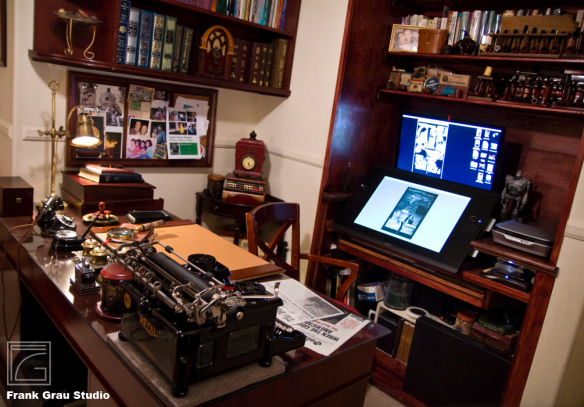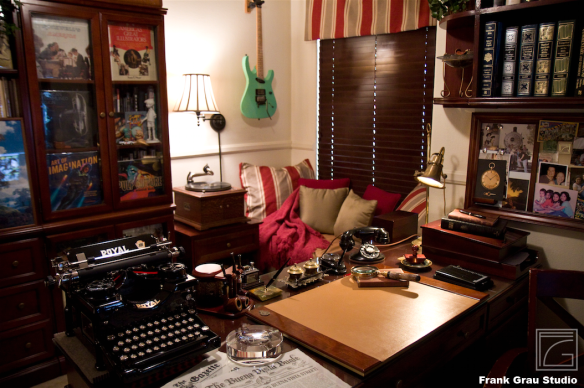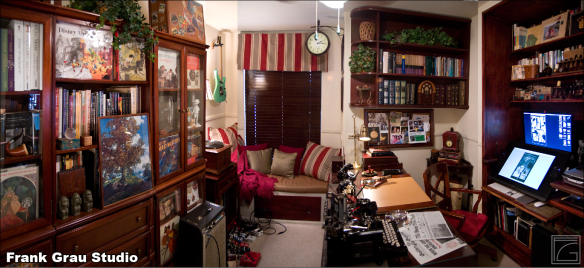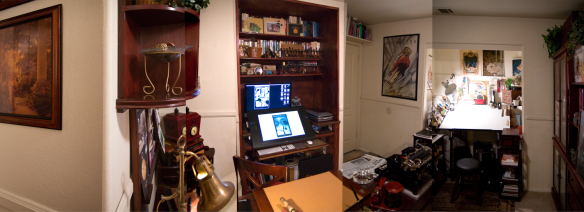I’ve always liked banker’s swivel chairs, so when I furnished my studio nearly two decades ago, I bought one from the Bombay Company (which no longer has retail outlets, but still operates an online store).
While their furniture wasn’t as cheap as Ikea’s cardboard-and-staple-quality offerings, it was still cobbled together in the Orient, which meant is wasn’t as durable as American products manufactured in the first half of the 20th century (come to think of it, not even today’s American-made products are as good as they were back then). Modern manufacturing methods which focus on keeping costs down necessitated a design that was far from being as comfortable as an authentic banker’s chair. The Bombay Co. version isn’t at all as ergonomic, with its straight, tall back and small seat.
Several years ago, the seat on the Bombay chair cracked in half, and now the armrest popped off the front post. Also, the wheel casters began losing bearings — either that, or someone has been discharging a BB-gun inside my studio. Anyway, it seems like every joint on the chair is loose and the entire thing is literally wobbling apart. It was time to introduce the chair to the fireplace.
So now I decided to look for an authentic, vintage banker’s chair, with the low, curved back. Most of the samples online went from $250 to $650, but I found one on Craigslist and paid $80 for it. 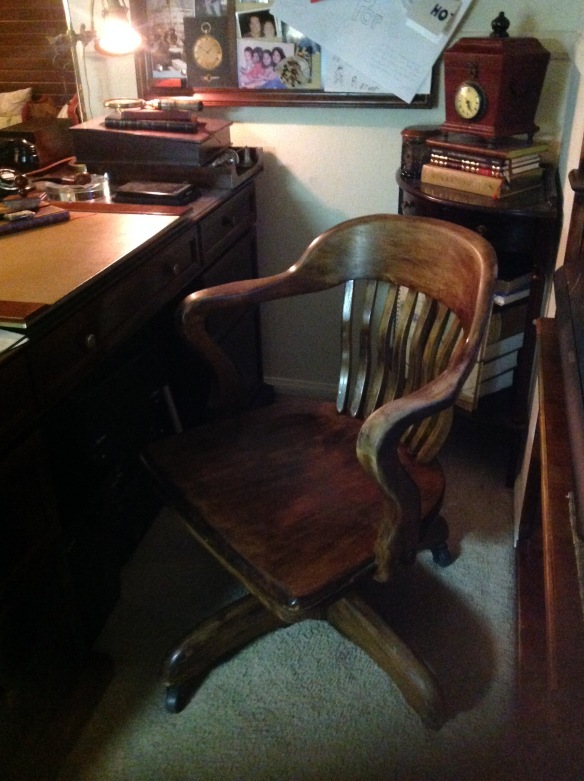
From what I could find, this was made in the early half of the 20th century. Even after all this time, this thing is solid. And it’s so comfortable that it doesn’t need padding. Sure, it has a patina — “patina” seems to be the new way of saying that the finish has taken a beating, which is supposed to be part of the charm.
Anyway, I’m glad to get rid of the hunk of junk Bombay garbage. It served me well enough for a while, but, as usual, new stuff seems to be intentionally manufactured to be disposable. Does anyone make anything to last anymore?
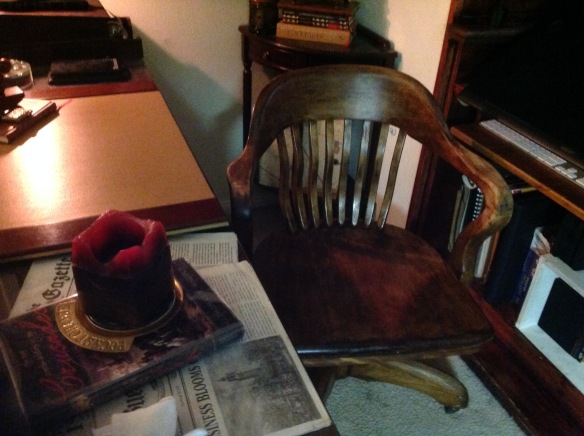
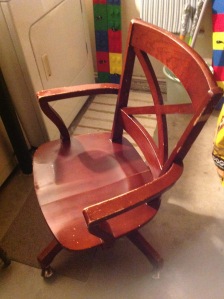
This is Bombay Company’s version of a banker’s swivel chair. Not at all as cozy as the real deal. Here it is after being tossed out of the studio.

